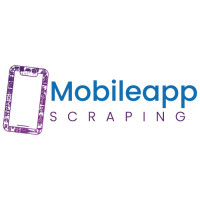What Advantages Does Your Business Get If You Scrape Swiggy Platform Data?

Strong 8k brings an ultra-HD IPTV experience to your living room and your pocket.
June 12, 2024
Introduction
In today's fast-paced food delivery industry, access to real-time data and insights is crucial for businesses to stay ahead of the competition. Swiggy, one of India's leading food delivery platforms, offers a wealth of valuable data that can be leveraged to gain a competitive edge. Businesses can scrape Swiggy platform data to get valuable information on customer preferences, market trends, and competitor strategies. In this comprehensive guide, we'll explore the advantages of scraping Swiggy platform data for your business and how you can utilize Swiggy API scraping techniques to collect valuable food delivery data.
Understanding Swiggy Platform Data Scraping
Scraping Swiggy platform data involves extracting information from the Swiggy website or API to gather insights into its food delivery services, menus, restaurants, and customer reviews. Swiggy, a popular online food ordering and delivery platform, provides a wealth of data that can be valuable for market analysis, competitor research, and understanding consumer preferences. There are two main methods for scraping Swiggy data: web scraping and API scraping.
Web Scraping: This method involves extracting data from the Swiggy website directly using web scraping tools or custom scripts. With web scraping, you can collect information such as restaurant names, menu items, prices, ratings, delivery times, and customer reviews. However, web scraping may be subject to rate limits, anti-scraping measures, and legal constraints, so it's essential to use it responsibly and ethically.
API Scraping: Swiggy also provides an API (Application Programming Interface) that developers can use to access certain data programmatically. By leveraging the Swiggy API, you can collect structured data in a more efficient and reliable manner compared to web scraping. The Swiggy API allows you to retrieve information such as restaurant details, menu items, order history, and delivery status. However, access to the Swiggy API may require authentication and adherence to usage limits and terms of service.
Collecting Swiggy Food Delivery Data: Whether through web scraping or API scraping, you can gather a wide range of data related to Swiggy's food delivery operations. This includes details about individual orders, delivery locations, order volumes, popular cuisines, peak hours, and customer preferences. Analyzing this data can help restaurants optimize their menus, delivery services, and marketing strategies to better meet customer demands and improve overall efficiency.
Swiggy Platform Data Scraper: To build a Swiggy platform data scraper, you'll need to develop or configure a scraping tool capable of navigating the Swiggy website or API, sending requests, parsing HTML or JSON responses, and extracting relevant data. Additionally, you should consider implementing techniques to handle pagination, rate limiting, and data storage effectively. Always ensure that your scraping activities comply with Swiggy's terms of service and legal regulations regarding data scraping and privacy.
Benefits Of Scraping Swiggy Platform Data
Scraping Swiggy platform data offers numerous benefits for businesses, researchers, and developers looking to gain insights into the food delivery industry, consumer behavior, and market trends. Here are some key advantages:
Market Analysis: Businesses can scrape Swiggy platform data and conduct comprehensive market analysis to understand the competitive landscape, identify emerging trends, and evaluate consumer preferences. Analyzing data on restaurant performance, menu popularity, delivery times, and customer reviews can help businesses make informed decisions about pricing strategies, menu offerings, and geographic expansion.
Competitor Research: Scraping Swiggy data allows businesses to gather intelligence on competitors' offerings, pricing, promotions, and customer satisfaction levels. By monitoring competitor activity on the platform, businesses can identify opportunities for differentiation, benchmark their performance, and stay ahead of the competition.
Menu Optimization: Collecting Swiggy food delivery data enables restaurants to optimize their menus based on customer preferences, dietary trends, and demand patterns. By analyzing data on menu item popularity, order frequency, and customer feedback, restaurants can tailor their offerings to better meet the needs and tastes of their target audience.
Customer Insights: Scraping Swiggy platform data provides valuable insights into customer behavior, preferences, and demographics. By analyzing data on order history, delivery locations, order sizes, and ordering frequency, businesses can segment their customer base, personalize marketing campaigns, and enhance customer engagement and loyalty.
Operational Efficiency: Leveraging Swiggy API scraping tools, businesses can streamline their food delivery operations, optimize delivery routes, and minimize delivery times. By accessing real-time data on order volumes, delivery locations, and traffic conditions, businesses can allocate resources more effectively, reduce costs, and improve overall operational efficiency.
Predictive Analytics: By analyzing historical Swiggy platform data, businesses can develop predictive models to forecast demand, anticipate trends, and optimize inventory management. Predictive analytics can help businesses proactively adjust their operations, pricing strategies, and marketing efforts to capitalize on emerging opportunities and mitigate risks.
Strategic Decision-Making: Ultimately, to scrape Swiggy platform data empowers businesses to make data-driven decisions across various aspects of their operations, from marketing and sales to product development and customer service. By harnessing the power of data analytics, businesses can gain a competitive edge, drive growth, and enhance customer satisfaction in the dynamic and highly competitive food delivery market.
How To Scrape Swiggy Platform Data?
You can scrape Swiggy platform data through various methods, including web scraping and API scraping. Each approach has its advantages and considerations, depending on the specific requirements and constraints of the scraping task.
Web Scraping:
Identify Target Data: Determine the specific information you want to extract from the Swiggy platform, such as restaurant details, menu items, prices, ratings, and customer reviews.
Choose a Web Scraping Tool: Select a web scraping tool or framework that best suits your needs. Popular options include BeautifulSoup (Python), Scrapy (Python), and Selenium (Python/Java).
Build Scraping Script: Develop a scraping script that sends HTTP requests to the Swiggy website, retrieves HTML content, and parses relevant data using CSS selectors or XPath expressions.
Handle Pagination: Account for pagination if the data you want to scrape is spread across multiple pages. Implement logic to navigate through pagination links and extract data from each page.
Handle Anti-Scraping Measures: Be prepared to encounter anti-scraping measures implemented by Swiggy, such as CAPTCHAs or rate limiting. Implement techniques to bypass or mitigate these measures while adhering to legal and ethical guidelines.
Data Parsing and Storage: Parse the extracted data into a structured format (e.g., JSON, CSV) and store it in a database or file for further analysis or processing.
Swiggy API Scraping:
Obtain API Access: Register for access to the Swiggy API and obtain necessary API keys or credentials to authenticate your requests.
Review API Documentation: Familiarize yourself with the Swiggy API documentation, including available endpoints, request parameters, and response formats.
Send API Requests: Use HTTP requests (e.g., GET, POST) to interact with the Swiggy API and retrieve desired data, such as restaurant details, menu items, order history, and delivery status.
Handle Authentication: Ensure that your API requests include proper authentication headers or tokens to authenticate with the Swiggy API servers.
Handle Rate Limits: Monitor and respect any rate limits imposed by the Swiggy API to avoid being blocked or throttled.
Data Processing and Storage: Process the API responses to extract relevant data and store it in a structured format for analysis or integration into your application.
Compliance and Legal Considerations: Ensure that your scraping activities comply with Swiggy's terms of service, privacy policies, and legal regulations governing data scraping and usage.
Conclusion
Mobile App Scraping offers a comprehensive solution for businesses in the food delivery industry to harness the power of scraping Swiggy platform data. Our expertise in Swiggy API scraping and advanced data analysis tools empowers businesses to gain valuable insights and stay ahead of the competition.
With Mobile App Scraping, businesses can unlock a wealth of benefits, including market insights, competitor analysis, customer segmentation, and menu optimization. By collecting Swiggy food delivery data, businesses can make informed decisions, identify emerging trends, and tailor their strategies to meet customer demands effectively.
Our Swiggy platform data scraper ensures efficient and reliable data extraction, while our advanced data analysis tools enable businesses to derive actionable insights from the collected data. Whether you're looking to enhance your menu offerings, optimize delivery operations, or refine your marketing strategies, Mobile App Scraping provides the tools and expertise you need to succeed in the dynamic food delivery market!
Contact Mobile App Scraping today to learn more about how we can help you leverage scraping Swiggy platform data to drive business growth and gain a competitive edge.
Benefits-of-Scraping-Swiggy-Platform-DataHow-to-Scrape-Swiggy-Platform-DataUnderstanding Swiggy-Platform-Data-ScrapingWhat-Advantages-Does-Your-Business-Get-If-You-Scrape-Swiggy-Platform-Data
Note: IndiBlogHub features both user-submitted and editorial content. We do not verify third-party contributions. Read our Disclaimer and Privacy Policyfor details.


